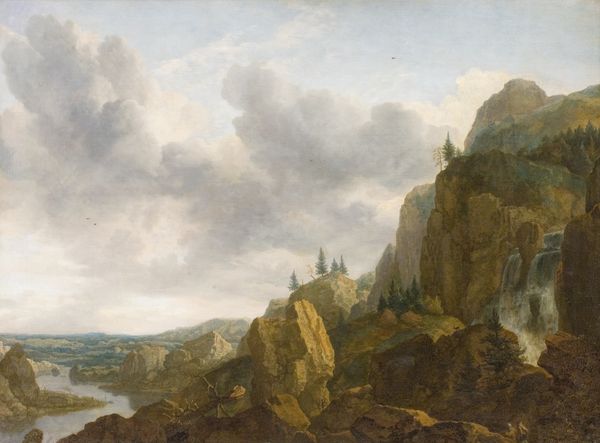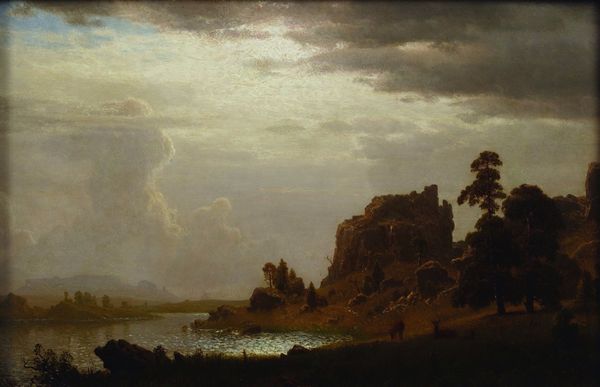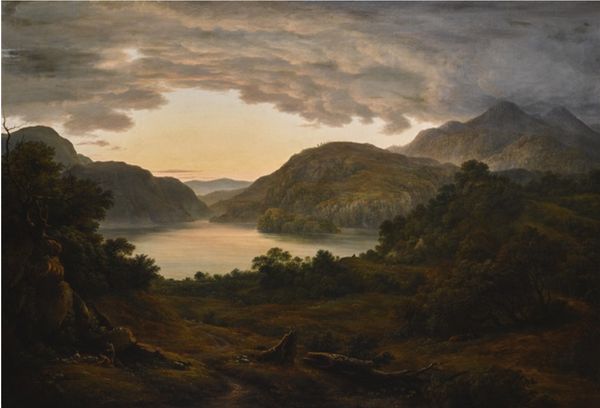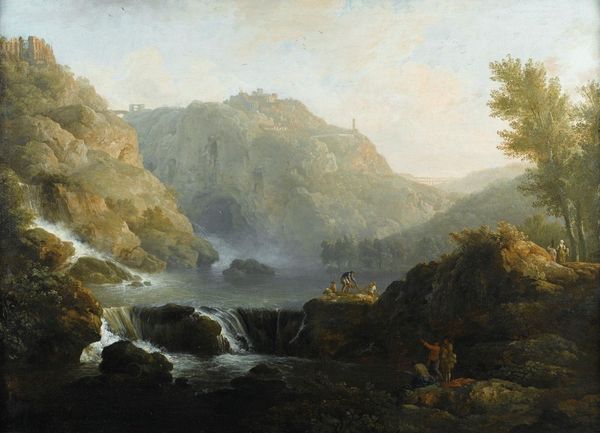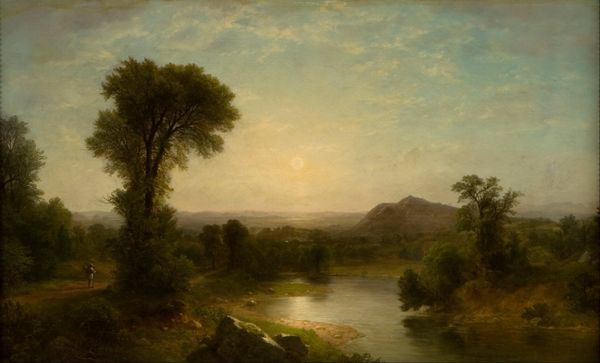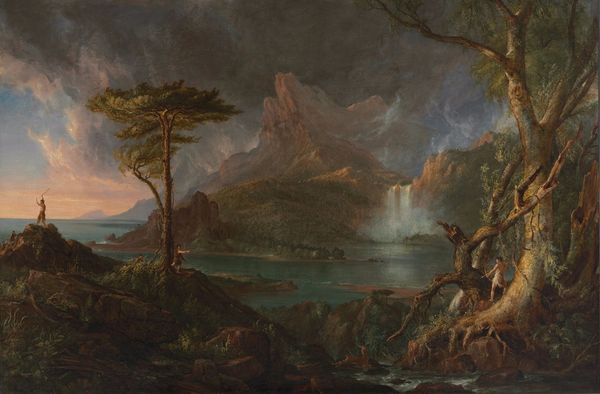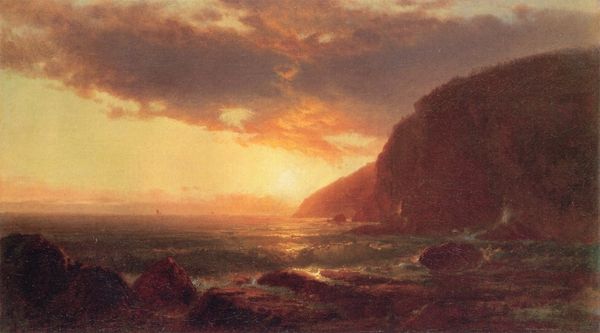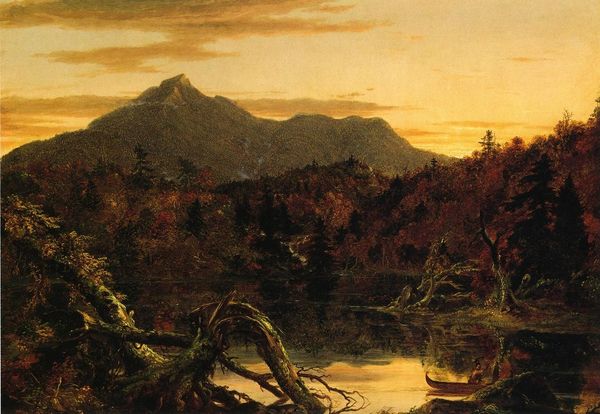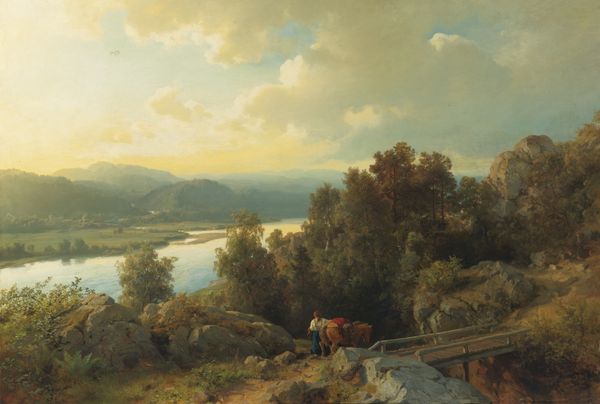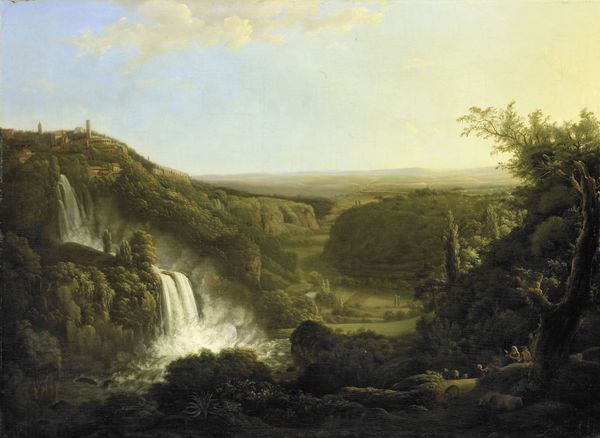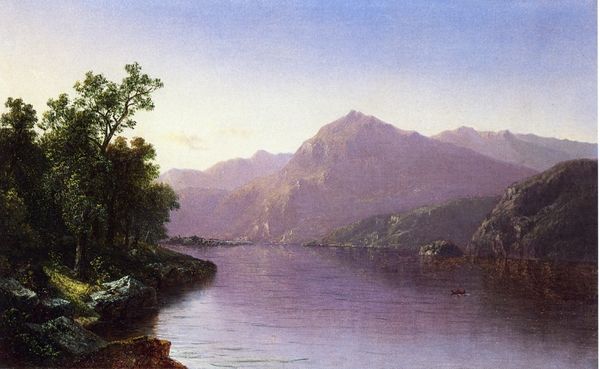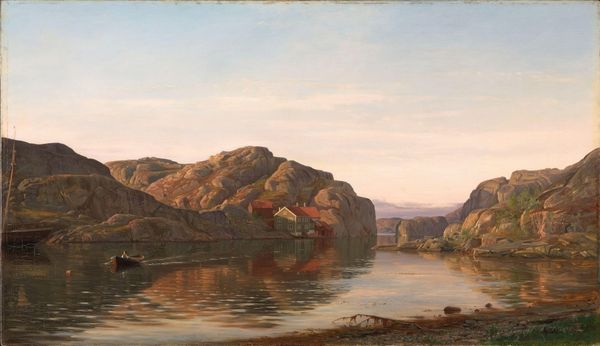
Copyright: Public Domain: Artvee
Editor: This is Albert Bierstadt's "Island Lake, Wind River Range, Wyoming," painted in 1861 using oil paint. It evokes such a sense of awe; it's both majestic and somehow tranquil. What's your take on this piece? Curator: Bierstadt certainly understood how to portray the American West to a public hungry for the sublime. Looking at it now, through the lens of history, I’m particularly struck by the construction of this image. The painting served a purpose in shaping the cultural imagination of westward expansion. Notice the framing – almost theatrical. What effect do you think that had on viewers? Editor: It definitely creates a sense of spectacle, like we're witnessing something grand and important. Curator: Exactly. And think about when this was painted - 1861. The Civil War had just begun, and there was deep division in the country. Paintings like this offered a vision of a unified, magnificent American identity, connected to this seemingly endless landscape, which conveniently glosses over the indigenous peoples and their claim to the land. This is landscape as nation-building, wouldn’t you agree? Editor: I hadn't considered the nation-building aspect so explicitly. I was more focused on the artistic technique, the light, and the detail, so that completely reframes how I see it. Curator: And the commercial aspect. The Hudson River School tapped into a growing market for landscape paintings, and Bierstadt, as a shrewd businessman, made paintings on a large scale to meet the public demand. The bigger the canvas, the bigger the impact and the bigger the price tag. He understood the power of visual storytelling and its market value. Editor: This makes me realize how deeply interwoven art, politics, and economics can be. Thanks, that's been really insightful. Curator: Indeed. By considering the historical moment, we gain a much richer understanding of Bierstadt’s art, its intended impact, and its lasting significance on the cultural and visual rhetoric of America.
Comments
No comments
Be the first to comment and join the conversation on the ultimate creative platform.
